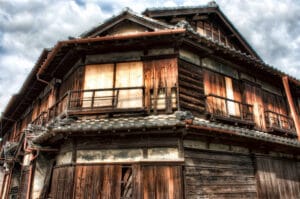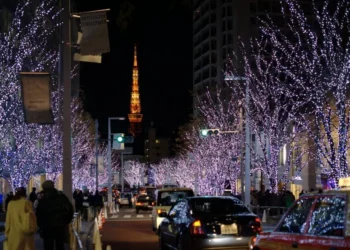No products in the cart.
The Trend of TikTokers Buying Abandoned Homes in Japan Known as Akiya
Introduction
A new trend is gaining popularity on TikTok: content creators are purchasing and renovating abandoned homes in Japan, known as akiya. With Japan’s aging population and rural depopulation, many homes in smaller towns and villages have been left uninhabited. These empty properties present an opportunity for those looking for affordable housing options, especially for those with a flair for DIY projects. TikTokers are documenting their journey of acquiring these abandoned homes and transforming them into livable spaces, creating viral content along the way.
What Are Akiyas?
Akiyas are homes that have been abandoned, often in rural areas where the population has dwindled as younger generations move to cities for work. In some cases, these homes have been left empty due to inheritance issues, with family members unsure of what to do with the property. As a result, many akiyas remain vacant for years, falling into disrepair.
The Japanese government has recognized the problem of vacant homes and has launched initiatives to address the issue. Some local governments are even offering akiyas for free or at extremely low prices to encourage people to move into rural areas. For those looking to purchase property, this represents an incredible opportunity to get a home at a fraction of the price you would expect in urban centers.

The Appeal of Akiyas on TikTok
TikTokers have taken notice of these cheap, often picturesque homes, using their content to showcase their renovations and experiences. Buying an akiya and documenting the process of fixing it up offers unique content that appeals to viewers who are interested in Japanese culture, affordable housing, or home renovation projects. These videos often highlight the contrast between the condition of the home when it’s first purchased and the transformation that takes place as renovations progress.
Additionally, the idea of buying an abandoned home in Japan for a price that’s unimaginable in places like the U.S. or Europe adds to the allure. In cities like Tokyo, homes are still expensive, but akiyas outside major urban areas are incredibly cheap. Some TikTokers have even reported finding akiyas for free in remote locations, as local governments are eager to fill these vacant homes and rejuvenate communities.
Why Are These Homes So Cheap?
There are several reasons why akiyas are available for such low prices. First, Japan’s population is shrinking, and many rural areas are experiencing depopulation as younger people move to bigger cities for work and education. As a result, there are more homes than there are people to fill them, leading to a surplus of properties in rural regions.
Additionally, akiyas can come with hidden costs. Many of these homes require significant repairs and updates to make them livable. Older homes in Japan may not meet modern building codes, and fixing structural issues, electrical systems, or plumbing can be costly. However, for TikTokers and DIY enthusiasts, this challenge can also be part of the appeal. Renovating an akiya allows buyers to create a customized living space while generating content that can attract a large following online.
The Impact on Japan’s Housing Market
The popularity of akiyas among TikTokers and other international buyers has brought attention to Japan’s rural housing market. In the past, these homes might have been left to deteriorate, but now they are being given a second life. For local communities, this influx of new homeowners could help to revitalize rural areas that have been struggling with depopulation.
However, this trend also raises questions about the future of these rural areas. While TikTokers and other content creators are bringing attention to akiyas, it remains to be seen whether this will lead to long-term growth in these communities. For many rural towns, attracting permanent residents and creating sustainable economic opportunities remains a challenge.
Conclusion
The trend of TikTokers buying and renovating abandoned homes in Japan has brought new attention to the issue of akiyas. For content creators, these homes provide an opportunity to create unique, engaging content while also gaining a foothold in Japan’s housing market. However, buying and renovating an akiya comes with its own set of challenges, from costly repairs to navigating Japan’s property laws.
As more people become interested in purchasing these properties, it will be important to consider the long-term impact on Japan’s rural communities. For now, the rise of akiya purchases among TikTokers represents a creative solution to a unique housing problem, with the potential to revitalize rural areas and bring new life to Japan’s forgotten homes.










